1998 was another big year for gaming. Some of the greatest games of all time that
are still revered to this day were coming out.
Resident Evil 2, Banjo-Kazooie, Metal Gear Solid, Half-Life and Spyro
the Dragon and of course The Legend of fucking Zelda the fucking Ocarina of
fucking Time. It was a great time to be
a gamer, particularly a console gamer.
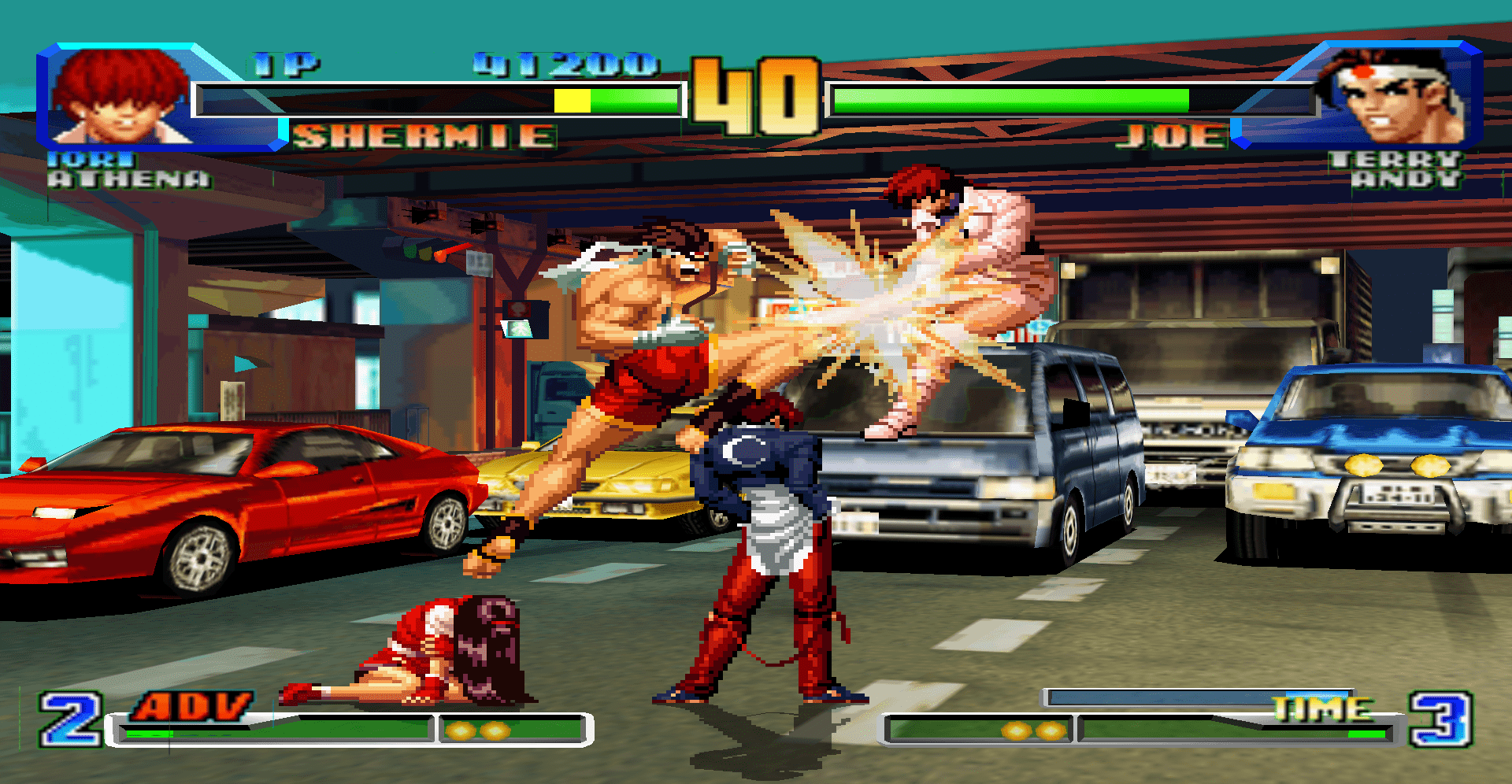 |
| 3D backgrounds! |
I sure hope that doesn’t mean home console gaming is going
to supplant arcade gaming because there are some great arcade games this year,
mostly from SNK. Capcom seems to have
slowed down their arcade game production, possibly because of the cost of
making games for that beast the CPS3, and were putting more manpower into their
console games, such as the aforementioned Resident Evil 2. SNK meanwhile was still chugging along with
the Neogeo while the Hyper Neogeo 64 dragged its feet. Let’s find out who put their efforts on a
winning horse.
Blazing Star(SNK)
Alex Louise Armstrong does not flex as much as that opening
and the game itself follows suit. Like
with Pulstar, Blazing Star pushes the pre-rendered 3D-simulating graphics to
the max with more enemies, bigger bosses and fancier animated backgrounds. I swear SNK employed some kind of wizard to
make Blazing Star look as good as it does on this 2D-based arcade system. It’s a sight to behold and the real reason to
play the game because the game design isn’t going to win any awards.
Blazing Star’s biggest problem is the same as Pulstar’s:
it’s way too fucking hard. It’s a bullet
hell game. Shots fly at you from all
directions, bosses unleash clouds of the stuff and their speed and fire rate
ramp up as the game goes on, all the while you’re unleashing your own hail of
gunfire as the enemies explode and flash white with damage with hardly a moment
to breathe. It’s intense and fun for a
while, but as the game goes on it becomes literally impossible to avoid getting
hit more and more often. Several situations
flood the screen with things that will kill you on contact to a ridiculous
degree, even for a bullet hell game.
Unlike Pulstar, Blazing Star lets you continue right where you left off,
but with how bullshit the game becomes, you’re dying practically the moment you
continue, potentially 4 or more times on the same section of one stage! Beating this game in an arcade would’ve cost
a fortune!
Maybe this is less a problem for bullet hell fans used to
extreme difficulty, but there isn’t a lot beyond the visuals to make Blazing
Star stand out in the genre. The ship
variety is nice, but other games at this time like the Gradius games also had
ship variety and Blazing Star’s story is nonexistent until a badly translated
wall of text at the end. It’s fun to
play for a little while, but it doesn’t hold my attention to the end.
Marvel vs. Capcom(CAP): Until I edit in the games before it,
this is the first of the Marvel-based Capcom fighting games I’ve gotten
to. Capcom released X-Men: Children of
the Atom, Marvel Super Heroes and X-Men vs. Street Fighter before now, starting
off with Darkstalkers-like chain combo combat and eventually evolving into the
trilogy of games that would come to define the fast-paced tag team fighter.
The only thing holding Marvel vs. Capcom back is the lack of
content. There are only 15 fighters, a
few fighters less than Street Fighter Alpha 2 and even one fighter less than
X-Men vs. Street Fighter. If you ask me,
if you’re making a team game, you need a bigger character count. In this game you fight 7 teams before facing
the super powerful Marvel villain Onslaught.
This means it only had barely enough characters for a standard arcade
mode and you run out of characters to play with faster than other games around
this time.
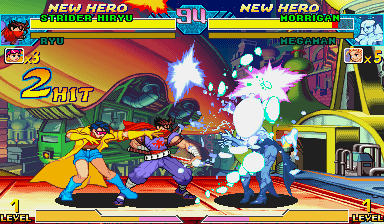 |
| Jubilee is one of my favorite X-Men. |
Regardless of the character count, the core gameplay is a
ton of fun and it has a beautiful character art-filled presentation for what it
has so it’s well-worth playing.
Metal Slug 2(SNK): The original Metal Slug was a major win
for SNK, but Metal Slug 2 is where the franchise really got put on the
map. Eri and Fio join Marco and Tarma as
playable characters, there are different forms characters can take on that change
their weapons and most importantly there are a few more vehicles to man beyond
the Metal Slug. Bosses are bigger,
stages are more varied and the whole game looks even more gorgeous. It all culminates in one of my favorite final
stages in arcade history with one of my favorite musical pieces ever.
Well, maybe not the fast-paced part because holy shit that slowdown.
The first game had its bouts of slowdown, but it was never
too bad and happened sparingly. Metal
Slug 2 is constantly suffering from slowdown for practically the entire
game. It’s understandable when there are
several things onscreen at once, but this game struggles to keep up with
scenarios the first game ran with no issue.
Having just a few enemies onscreen slows the game down some times and
then other times there are the same number of enemies and the game runs just
fine. I like a little slowdown so it’s
easier to keep up with everything onscreen, but this isn’t a little
slowdown. It’s a lot.
 |
| Not the visuals though. |
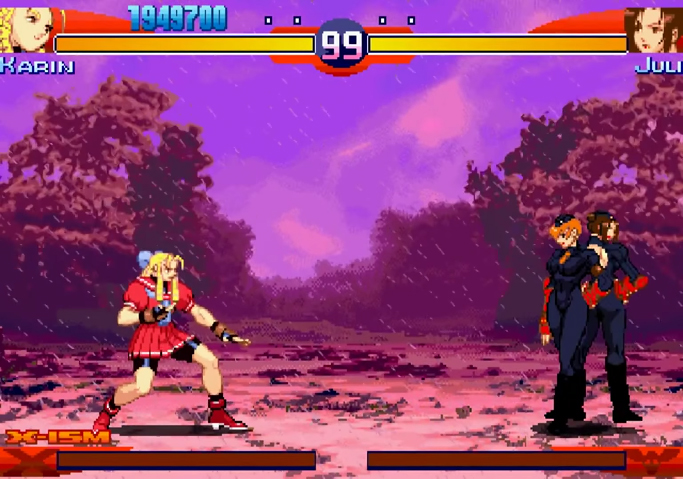 |
| A boss where the dramatic battle mode is against you is a pretty neat addition. |
 |
| Tip #1: wait for him to use his super! |
Stages are more boring than in Alpha 2 as well. They’re barely animated and lack detail you’d
come to expect from Street Fighter. No
standout visuals like the cyclists or Capcom cameos this time. Alpha 3 is the most content-rich Street
Fighter game so far and I recommend it because of how substantive that content
is, but among the Alpha games I still put 2 above it.
KOF 98 is probably the most well-known game in the franchise
and the most popular. What is lacks in
plot it makes up for in everything else.
All but a handful of characters from every KOF game up until this point
are included, which makes for what might actually be the biggest selection of fighters
in any fighting game at the time of its release.
All the new stages are the best yet and have an impressive
sense of depth. Having learned from KOF
97, every team has music consisting of new renditions of their themes from
previous games and there’s even ways to trigger more than one team’s theme,
like a new rendition of the Women’s Team’s KOF 94 theme.
Not unlike Real Bout Fatal Fury Special, there’s no story,
but even then there are many special character introductions and the game gives
players a little something at the end of the single player mode. There’s no dialogue, but there’s a cutscene
introducing the final boss and an arcade ending calling back to the ending of
the original shit-ass KOF game, followed by a montage of well-rendered
character artwork over the credits.
Depending on what team you used, you get a different bit of team artwork
at the very end and there are several to get.
Not just for the standard teams, but for teams of characters with some
kind of connection, like team compositions from previous games or all three members wearing a
certain accessory. They aren’t as good a
reward as a team-specific ending, but they do add some replay value and there
are a lot of them.
The single player experience is good as a break after the
storyline 97 concluded, but it’s not what you’re there for. It’s designed to allow a ton of KOF
characters to fight each other, story be damned, and it succeeds in that
mission with flying colors, making for the best KOF game up to this point to
play with others.
None of that is inherently bad. Shock Troopers: Second Squad does everything
the first one did right: tight controls, a serviceable story, different routes
to new levels and lots of things exploding prettily by your hail of
gunfire. There are only 4 different
characters this time and no team mode, but the tradeoff is rideable
vehicles. They could have just re-used
the assets of the first one, but they tried something different instead while
not losing why the first one was so great.
I put Second Squad on the same level of quality as the original.
The Last Blade 2(SNK): The Last Blade 2 feels like the
conclusion of a duology. The story
continues where the first one left off, where Shinnosuke was defeated, but his
giant hell portal still needs to be sealed by a sealing maiden. As such it makes sense that the characters and
mechanics are largely untouched. The
only differences are a few new characters, notably Hibiki, new stages, rival
battle dialogue exchanges like in the Street Fighter Alpha games and minor
gameplay tweaks like air recovery. The
two modes of play, lengthy cutscenes, smooth animation and excellent music
compositions haven’t lost their touch.
The first game was great and this continuation matches its quality. They are best played together.
Jojo’s Venture(CAP): Before the anime took off and Viz
started translating the manga in its entirety, the only part of Jojo’s Bizarre
Adventure we got in English was part 3: Stardust Crusaders. It was in the cultural zeitgeist in English
for quite some time in addition to already being the most iconic and popular
part in Japan . Its recognition in English was thanks to a set
of 2 OVAs (each adapting one half of the story), Viz translating the manga in
increasingly hard to find volumes and this fighting game from Capcom.
Jojo’s Venture, as this first version is known in English,
is a bit different from the other Capcom fighters up to this point. There are no punch and kick buttons. Instead there is a weak, medium and strong
attack button in addition to a special button.
The special button is essentially the stand button and acts as a stance
switch by bringing out your character’s stand.
Having a stand out is a stance switch that changes your attacks, but as
the stand takes damage, a meter drains and once it goes out, your stand is
disabled for a time, meaning you probably shouldn’t spend the whole fight in
stand mode. Super attacks are largely
simplified, requiring a standard special attack motion with 2 buttons. I don’t know if this is the first game to do
it like that, but it’s the first one I’m aware of.
In the gameplay there’s even more detail and references for
fans to love. Characters all have their
moves from the manga (Polnareff even has a reference to part 4), characters
have 2 different taunts also from the manga and the attack calling and “ora ora ora”
is a lot of fun, but it gets even more fun when two certain attacks clash and
it becomes a button mashing contest to come out on top.
If you get finished off with a super attack,
a portrait from the manga of your character goes flying and to this day that
might be my favorite super attack finish effect in any fighting game.
The one thing that holds it back is the same as Marvel vs.
Capcom: the character count. There are
only 12 playable characters, one half the heroes and the other half the
villains. There are two hidden
characters, but onlyy one is ever used in the stories and with the huge variety of
different villains from the manga and the higher character count of other fighting
games at this time, it’s a little disappointing how this game has less
characters than Super Street Fighter 2.
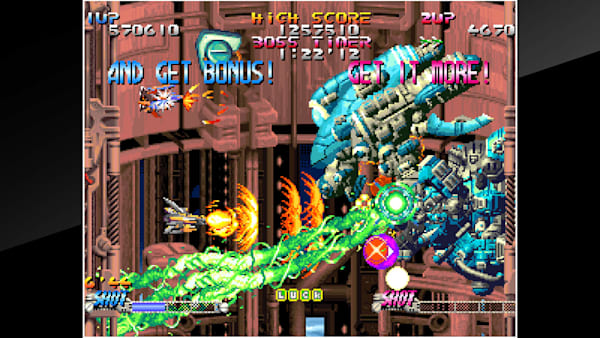
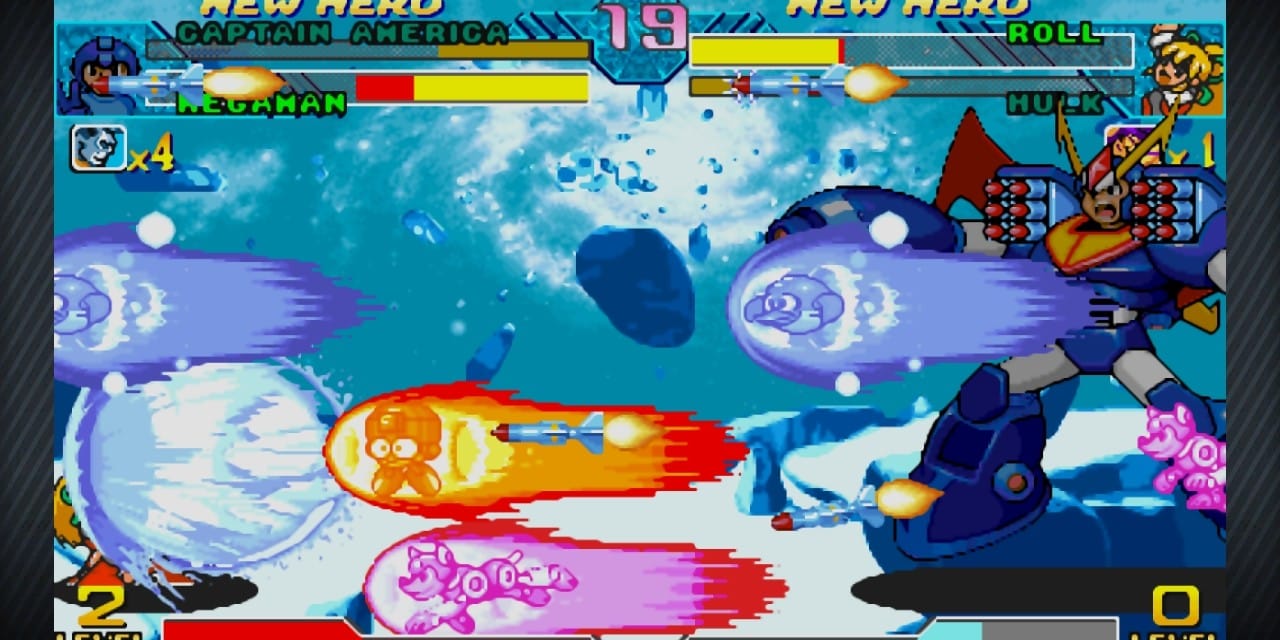
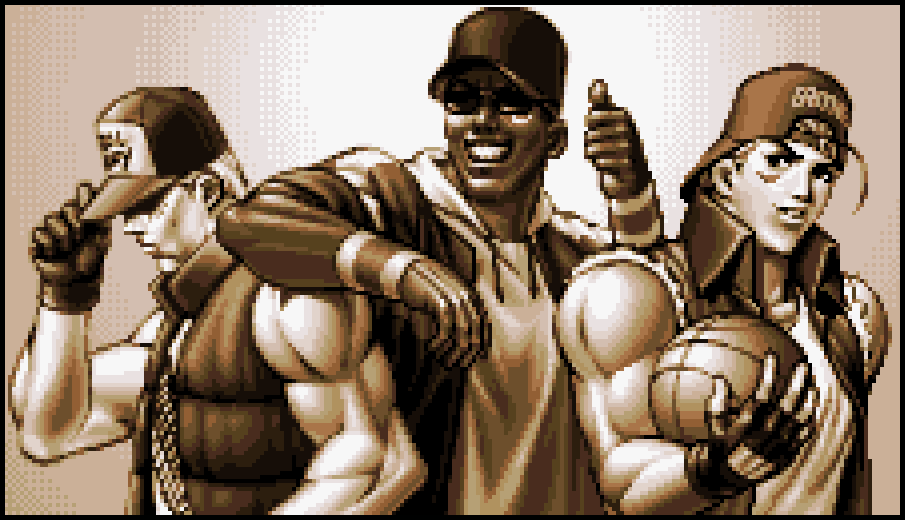

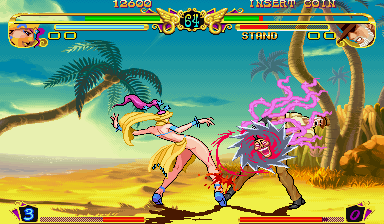

No comments:
Post a Comment